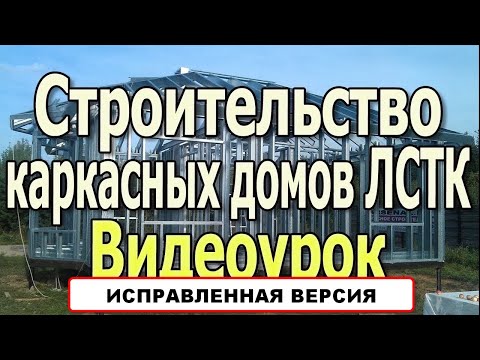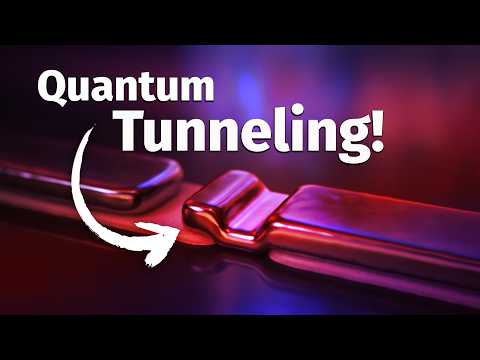Каркасные дома. Каркасное строительство из ЛСТК. Строительство каркасных домов из ЛСТК. Видеоурок.

In this video story, we will get acquainted with the technology of frame construction. Prefabricated frame houses from LSTK, the so-called. Frame construction technologies based on a thermal profile make it possible to build both quickly erected cottages and any commercial real estate. That is, these are shopping malls, office buildings, industrial premises, hotels, prefabricated stores, gas stations. Moreover, using LSTK, it is possible to reconstruct buildings by erecting attics, extensions and superstructures, using a set of systems in combination and separately. That is, a wall system, a floor system, a roofing system. LSTK stands for light steel thin-walled structures, which are used, in principle, for the construction of prefabricated buildings, houses, cottages.
Frame construction technologies for prefabricated buildings are extremely popular all over the world due to their simplicity and economy. Most of all, I myself have been involved in precisely such constructions, and there are many such works in our list of objects. At the end of this video, I will show all our work. You will see for yourself how easy it is. Well, let's talk about the thermal conductivity of the thermal profile, because it is often said that the metal for such houses is very cold. It represents a cold system, which is the reason why steel has not previously been used in the construction of external walls. Due to its high thermal conductivity, which contributed to the formation of cold bridges. Steel thermal profiles with a minimum
cross section are used in the construction of external walls . I draw your attention, it is with a minimum cross-section, in which through grooves are cut in a checkerboard pattern, to increase the heat flow path, which reduces heat loss by up to 90 percent. Thanks to this solution, the problem of thermal conductivity, as such, is gone. And this is confirmed by numerous studies of European companies, and the great experience of our Russian companies. First, a virtual model of a frame house is designed. Then, a bill of materials and a production and line management program are compiled from it. All elements,
after production, are packed and labeled according to the project documentation. This is the technology for the production of such thermal profiles. And for a finished project in production, the program already controls the equipment and cuts to size. Free planning is also the result of the use of LSTK structures. Allows you to arrange attic floors with light trusses, beams with a span of up to 9-12 meters.
Original layouts of buildings are possible due to the ability of structures to cover spans up to 14 meters without intermediate supports along the roof, and up to eight meters along interfloor ceilings. The internal space of frame walls and ceilings is ideal for placing communications. Just like in frame-panel houses. Reducing the construction time of a frame house, and as a result, its cost, also depends on the degree of optimization of the construction process, in which, with the use of LSTK for serial construction, for example, a cottage village, with a typical building or townhouses, it is possible to use an enlarged assembly of prefabricated in the factory building elements. The prefabricated walls are already being assembled at the factory itself, and the whole elements of the prefabricated house are already being installed at the construction site. Such a house assembly technology, of course, allows minimizing the construction time of a frame house and optimizing many construction processes. Due to the lightness of each element of the frame house and the accuracy of its dimensions, the assembly of the LSTK frame at the construction site resembles the assembly of a large-sized constructor. That is, a
team of four to five people can assemble the entire frame of a house with an area of about 150 - 200 square meters in 5 -7 days. To assemble all elements of the building, you only need a screwdriver, since all elements are connected using self-drilling screws. The construction of LSTC is great for laying all communications inside the wall. This is possible due to the fact that the components of the wall cake correspond to the first category of fire safety, that is, they are not combustible. So, after all of the above, what has been said, let's summarize the advantages and disadvantages of these structures from light steel thin-walled structures of LSTK.
1. It is efficient energy saving. The use of an effective insulation in frames made of perforated thermal profiles makes it possible to obtain a thermal conductivity coefficient of 0.45, without taking into account possible options for insulation along the facade. This property can significantly reduce the costs of building operation and reduce the load on the power grid. The high heat-saving performance of LSTK allows the
use of a thermal profile for economical construction even in the conditions of the Far North. 2. It's low cost. Buildings built with the use of thermal profiles have stable dimensions, are well protected from the influence of biological, temperature and humidity processes. Durable houses and energy-efficient houses, and at the end of their service life or if major repairs are needed , repairs are not as expensive as buildings made from classic materials. 3. Does not require lifting equipment. The LSTK technology allows construction in conditions of
close urban and suburban development, without the use of heavy lifting equipment. Low specific gravity is ensured by effective design solutions in combination with the use of low-alloy structural steel in the manufacture of profiles. 4. Do not shrink. Thermal profile constructions do not shrink, which allows you to start finishing work immediately after the installation of the frame of the house. This significantly reduces the time and cost of building cottages.
5. Light weight design. The weight of one square meter of the supporting steel frame of the building is within thirty kilograms, from 30 to 70, depending on the number of storeys of the building. And the weight of one square meter of an already finished LSTK building, on average, is 200 kilograms. This advantage allows, with significant savings, to use as a foundation, a shallow slab with a height of only 200 millimeters, without regard to the quality of the soil. In principle, many such houses
are built this way. That is, the foundation slab is poured and the frame of the house is already placed directly. 6. It is a fast and efficient all-weather installation at home. Being a dry method of construction, the installation of a house from a thermal profile can be carried out all seasons. This is especially important for the investor,
and in the construction of economical housing, when the return on investment is the determining factor, reducing the construction time of a frame house, and as a result, its cost, also depends on the degree of optimization of the construction process. 7. It is high precision assembly. A high degree of reliability of thermal profile buildings is ensured by the dimensional stability of steel profiles, which are not affected by biological and moisture-temperature processes, unlike wood. 8. Environmental friendliness. As part of the construction of buildings built using a thermal profile, plasterboard sheets or glass-magnesite slabs are usually used as cladding, glass-magnesite is also called, and mineral wool on basalt fiber, which is environmentally friendly. Production, transportation, installation of a frame house and operation of a frame house requires much less energy costs, and does not have the diseased building syndrome associated with excessive moisture. The interior space of buildings is a safe, ergonomically and
environmentally friendly environment, due to good sound insulation and moisture-air impermeability. 9. Fire resistance. The fire resistance of the structure is ensured by the use of the most modern non-combustible materials with the highest degree of fire safety and cladding board material, the number of layers of which can be optimally selected to meet specific fire requirements. 10. Resistance to seismic and other dynamic loads. Buildings with a thermal profile as a supporting system are able to withstand seismic loads up to 9 points on the Richter scale. This is due to the elasticity of the steel frame of the building, in which additional bracing is used to achieve this property.
11. Not affected by biological processes. That is, a high degree of reliability of thermal profile buildings is ensured by the dimensional stability of steel profiles, which are not affected by biological processes, unlike wood. Let's finally deal with the shortcomings. There are no more shortcomings in such a house
than in any other. Moreover, some of them are compensated by other advantages. Most of the objections to this will be prejudices and idle conjectures that have nothing to do with a rational and objective view of the development and application of new technologies in construction. They are usually associated with the fear of everything new and the unwillingness to move with the times, and is expressed by people who have not spent a single day in such a house. There is an opinion that a house built using frame technology is short-lived. However, financial institutions providing loans estimate that steel structures have a lifespan of 70 years. And the same financial organizations give
50 years for wooden structures. Hot-dip galvanized steel profiles are protected from corrosion throughout the life of the building. And according to the research of an English company, 275 grams per square meter of zinc is enough to ensure durability for about a hundred years. But that's not even the point, the point is that now technological progress is moving so fast that it is unlikely that our children will live in the houses that we built 20 years ago. Most likely,
they will build a new one that will meet the modern, at that time already, architectural style and technical standards. However, there are still some points that I am called upon to draw attention to in this section. First of all, it is worth saying that, although when assembling the panel, a special compacted, reinforced and moisture-resistant drywall is used, it is itself a strong absorbent, and therefore, at the stage of installing wall panels, it is undesirable to expose them to prolonged exposure to moisture.
For this, it is necessary to carry out exterior decoration immediately after the installation of the walls. So, this is how the roof looks like using the technology of prefabricated buildings from thermal profiles. Here we see racks here, our truss system is also assembled from a thermal profile. As we can see, here is the usual truss system. A farm is assembled, supports are made on rack profiles. Next comes the filing with drywall from the inside, after which we have a vapor barrier . Further, inside there is a heater, a windproof film is laid, and a hat profile is laid. Here it plays the role of a crate and on it, already depending on what material you
choose, usually it is either a metal tile or a metal profile of a different wave. But it's not that important. This is already, as they say, to the taste of the customer. This is what the roof looks like. In this diagram, we see what the basic diagram of a floor panel or floor slab consists of, if it is an attic house or a two-story one.
Let's start from the bottom up. The frame itself. As we can see, it consists of a guide thermal profile. Connected in both longitudinal and cross section. Gypsum fiber or drywall is hemmed from below, usually two layers. Next comes the insulation, the next layer is soundproofing, soundproofing and sound-absorbing gasket. Then comes gypsum fiber, a sheet of gypsum fiber, which is attached to self-tapping screws. And already, directly, the external finish of the floor,
whether it be laminate, linoleum, or some other material, such as ceramic tiles. Well, directly, the composition of the wall. It consists in a frame made of a thin thermal profile, as we can see, in a vertical and horizontal connection with each other. Inside, like everyone else, a heater is laid. Insulation is also different, ranging from ecowool, basalt wool, polystyrene foam and the like. On both sides there is a plasterboard sheathing in two layers. Next
comes the steam-wind insulation, all this for a heater. What will be the exterior finish, it also all depends on you. That is, it will be either facade plaster, or vinyl siding, a budget option, or you overlay with bricks. This is also up to you. Well, window openings are finished with various materials. And in our case, that is, where we build it all, usually these are metal slopes with a polymer coating of metal. So, the first plot, the first photo. These are garages and a car wash. They are assembled from sandwich panels.
And the frame is assembled from thermal profiles. In principle, a rather large building turned out to be L-shaped. Here is the inside view. As you can see, there are rafter columns and columns for the drain. All this is assembled from a thermal profile. Cut out door and window openings. Everything is clad in sandwich panels. The next object is a former bakery. There was a complete reconstruction of this bakery.
The roof was completely dismantled and a new one made of thermal profiles was installed, and then covered with a profiled sheet. The outer walls were also made of corrugated board with wall insulation. Plus, on the back side, there was also an extension for finished products from sandwich panels. This photo already shows a cold warehouse. The frame is made of galvanized profiles, the cladding comes from a profiled sheet. And here is the view inside this cold warehouse. As we can see, the entire frame is made of galvanized, bent, light profiles. They are interconnected with self- tapping screws and bolted connections. Wall cladding is simply a profiled sheet,
since this is a warehouse of building materials, so it did not make sense to make warm walls here. This is a building materials store. It was made using the same technology as the previous warehouse. That is, there was a frame made of galvanized profiles, which were assembled and already lined with sandwich panels 100 millimeters thick. Since this is a store, and a heated store, so sandwich panels have already been used here. Here is a view from inside the same store. As we can see,
the same frame of the building, assembled and lined with sandwich panels, like walls and ceilings. i.e. the roof. This object is quite complex. It was a shopping mall. And here is the frame, of course, not from galvanized profiles, but from metal I-beams, a rather serious frame. And it was already lined with sandwich panels for elemental assembly. For an independent building, of course, it will be a difficult object, but I just want to show in this photo that such a commercial property can be built using this technology. And here is the view from the inside of the total shopping complex. As you can see, the columns are quite serious, I-beams. The truss system is also made of two-beams. The purlins for the roof, the channel bar has been laid,
the sandwich panels have already been laid on the channel bar according to the elemental assembly. The walls are all clad in sandwich panels in an elemental assembly, and the thickness of the walls here is 150 millimeters. And to confirm that such objects can be built year-round, here is a photograph where we built this object in winter. You see, there is snow, frost,
and wall cladding is taking place. That is, the insulation has already been laid and now the outer wall cladding is taking place. The most important thing is that people and power tools can stand here. Another one of our items. This hotel, along with a banquet hall, is attached to an existing cafe. It is located on the second floor, and below, on the first floor, there
is a car wash. This object was also made using frame technology, but from SIP panels. SIP panels were laid on the floor, then walls were erected, and all this was done under a common roof with an existing cafe, here is shown in the background. And it was already lined with vinyl siding in order to leave the interior that the cafe had.
Here is a view from inside one of the rooms of this cafe. As you can see, there is already a heating system. Installed windows with window sills, but without interior decoration. This is how residential buildings are built. This house can be used as a single family. Also for two families, it can be divided in half by a partition, and two different entrances, for one and for the second family. Very comfortable layout. A very convenient project . Here it is, a view from the inside of these houses. Here is a flight of stairs to the second floor and rack columns from a thermal profile. Here is such a one. He also looks like this. The roof has already been laid here,
the frame of the house is standing and the walls have begun to be clad. This is how the walls look from the inside. Outside there is a special panel. It is made according to the principle of vibrocasting, like paving slabs. Here it is attached from the outside and is already given an external finishing look. Inside, then LSU is installed, glass is a magnesite sheet, and it is poured with foam concrete, precisely according to this design. А также вместо пенобетона можно использовать любой утеплитель. Здесь толщина стен уже получается 150 миллиметров.
2022-03-27 22:03


